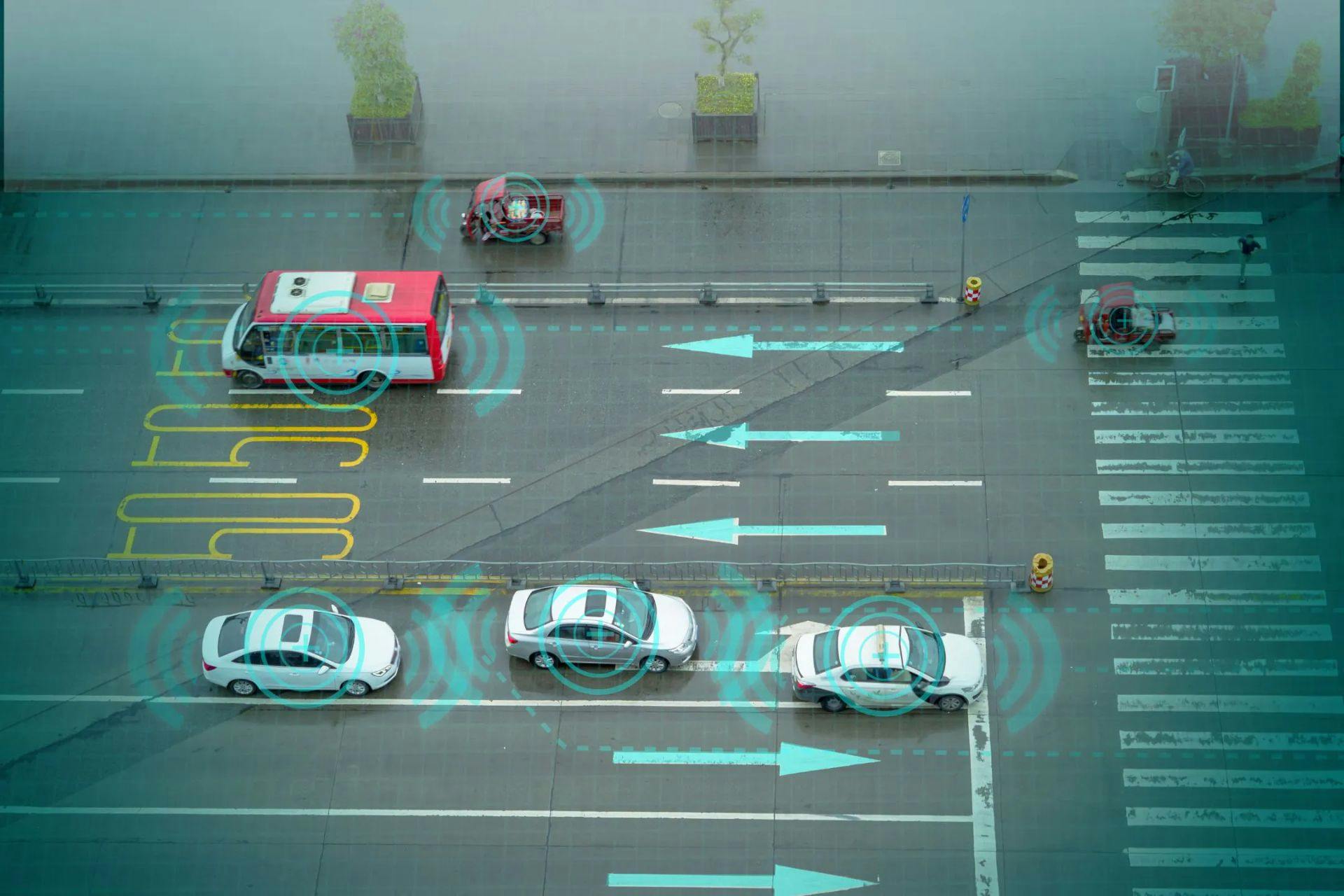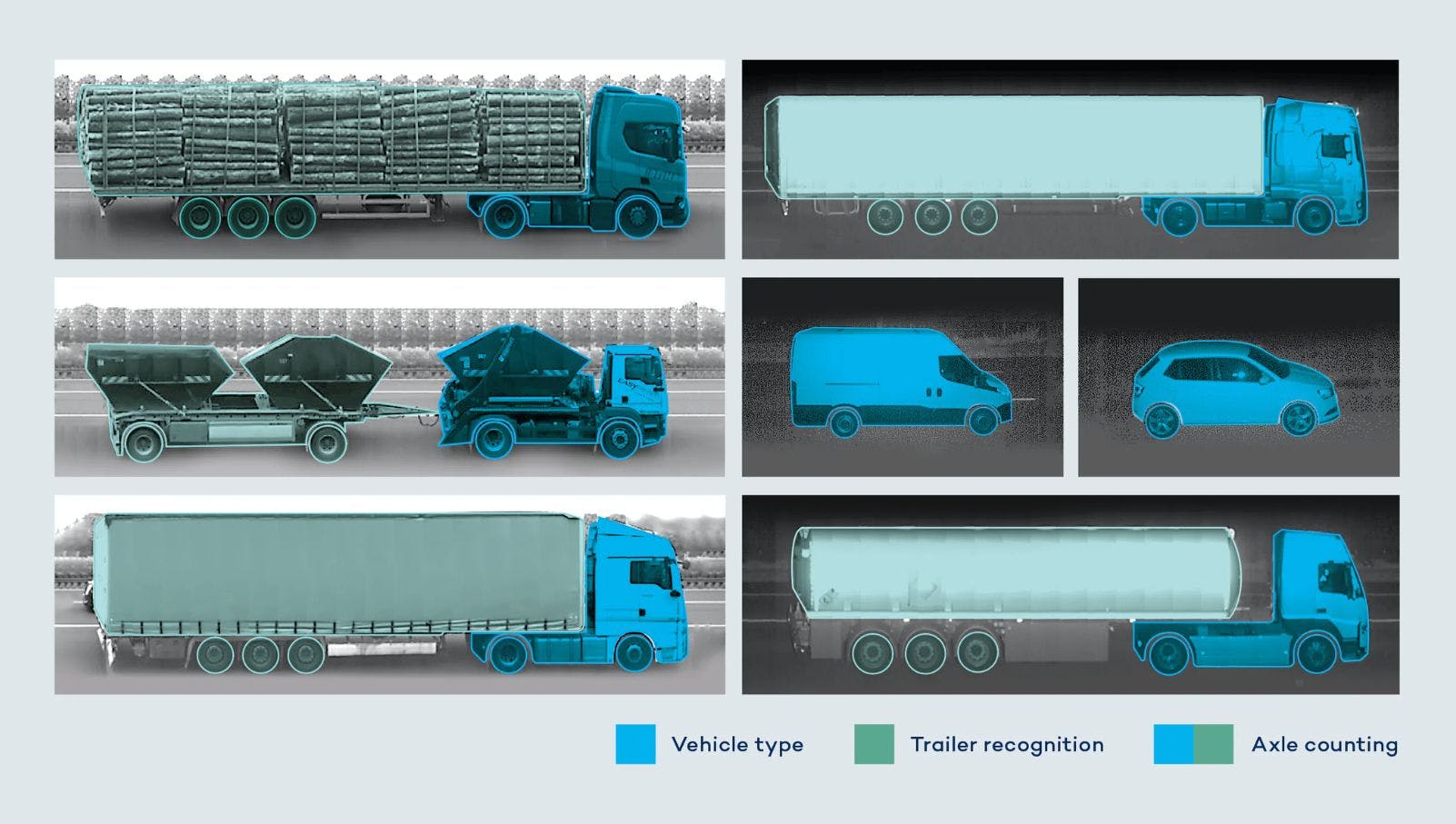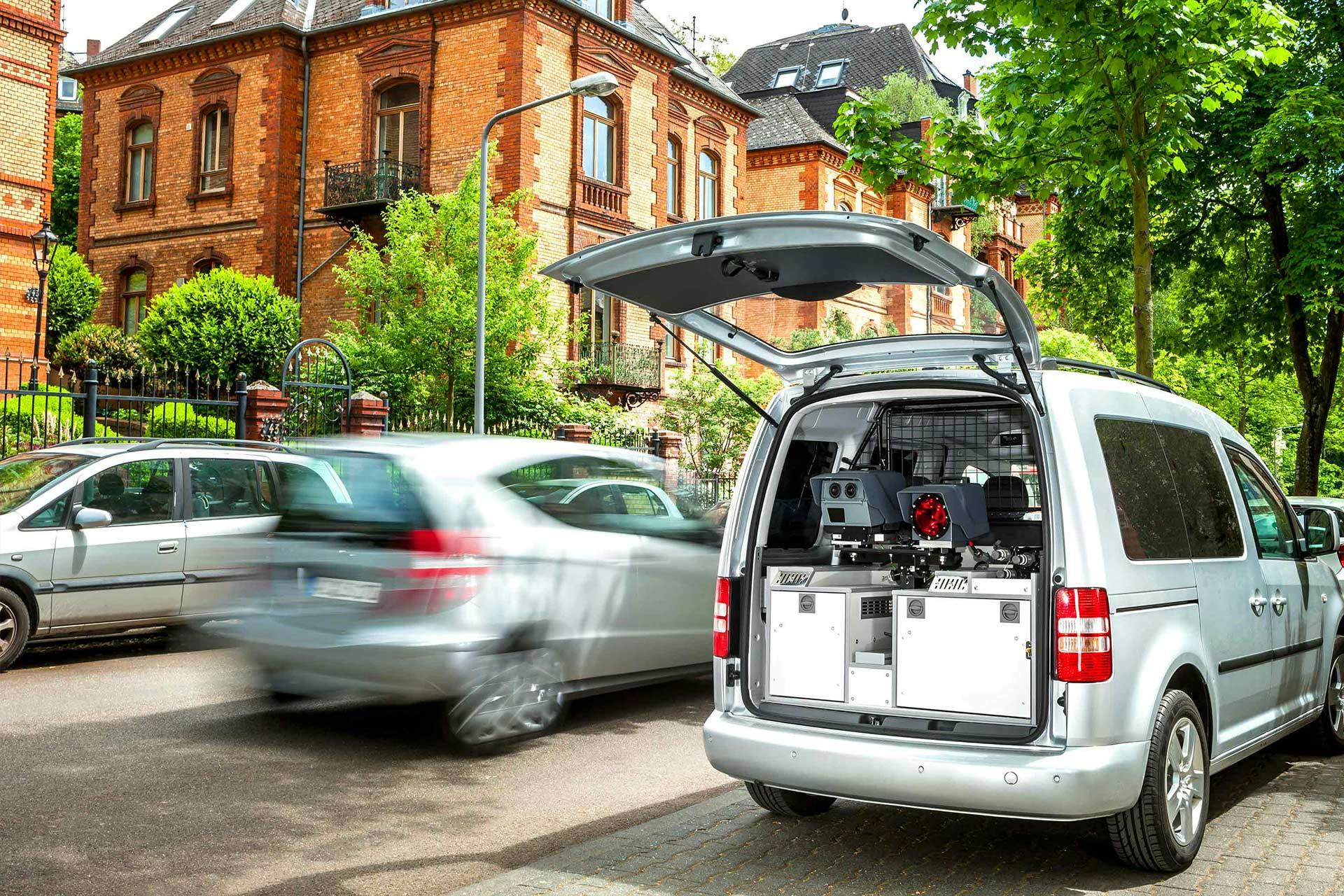
التنقل الذكيالتنقل على الطريق
كيف تساعد الأنظمة القائمة على الفيديو في تشكيل حركة المرور للمستقبل
تقنية "قديمة"
في ظل الانتقال المروري، يؤدي الزيادة في عدد وتنوع مستخدمي الطرق إلى سيناريوهات متزايدة التعقيد وبالتالي إلى مزيد من البيانات التي يجب مراعاتها. لذا، سواء كان الأمر يتعلق بإدارة حركة مرور أكثر تحملاً للمستقبل، أو تخطيط طريق أفضل، أو مراقبة مرور شاملة أو أساليب مبتكرة للقيادة الذاتية، فإن الطريق إلى تحسين حركة المرور يتطلب أنظمة ذكية قادرة على التقاط ومعالجة هذه الكمية الجديدة المتنوعة من البيانات وتحويلها إلى تطبيقات فعالة.
لكن هل توجد هذه التكنولوجيا المرورية المستدامة بالفعل؟ الإجابة هي نعم، لكنها ليست جديدة كما يفترض الكثيرون. بدلاً من ذلك، فإن تقنية الفيديو "المعروفة" تدفع الأمور قدمًا.
جيل جديد من أنظمة المرور
لقد تم استخدام الكاميرات لمراقبة حركة المرور لعقود، لكنها كانت حتى الآن تميل إلى أن تكون مجرد مراقب سلبي. في الأنظمة القائمة على الليدار أو الرادار، عادةً ما تُستخدم الكاميرا فقط لتسجيل الصور لتوثيق الانتهاكات بشكل قاطع. مع الجيل الأحدث من أنظمة إنفاذ المرور القائمة على الفيديو، يتغير الأمر. هنا، تكون الكاميرا هي المستشعر المركزي للكشف والتتبع والتوثيق.
يرتكز هذا التطور على العديد من التطورات التقنية:
أحدها هو توفر أجهزة أكثر كفاءة وأصغر حجمًا تشمل معالجات أسرع وأكثر فعالية. تساهم هذه الأجهزة في التحجيم المستمر، مما يجعل من المتاح وضع مزيد من القدرة على المعالجة في مساحة صغيرة. في أفضل الحالات، يعني ذلك أن البيانات التي تلتقطها الكاميرا يمكن تحليلها مباشرة في صندوق الكاميرا، أي في الموقع. لم يعد من الضروري وجود مكونات خارجية كبيرة، مثل معالجات التقييم الإضافية في خزائن التحكم. هذا يجعل تنفيذ المشاريع أكثر مرونة واقتصادية، ويقلل أيضًا من استهلاك الطاقة.
كما أن مراكز المعالجة المركزية تصبح أقل أهمية لهذه الأنظمة، مما يقلل من تعرض العمليات للأعطال ويسمح باستخدامها حتى دون اتصال بالإنترنت عالي السرعة.
الذكاء الاصطناعي للعين
التقدم الأساسي الثاني لحلول المرور القائمة على الفيديو هو التقدم في تكنولوجيا الكاميرا الحديثة. اليوم، تمتلك الكاميرات الصناعية تقريبًا جميع قدرات العين البشرية، بدءًا من تمييز الألوان و"رؤية" التفاصيل الصغيرة جدًا إلى زاوية رؤية واسعة، مما يجعل من الممكن تغطية مساحات كبيرة مع عدد كبير من مستخدمي الطرق المختلفين. على الرغم من أن الأنظمة القائمة على الليزر مفيدة من حيث الدقة، إلا أنها لها حدود هنا. فهي لا تلتقط اللون وفي بعض الأحيان تلتقط فقط الكنتورات أو الأحجام المعينة.
يمكن attribitu نجاح التغييرات التكنولوجية الثالثة للاتجاه نحو البرامج: مع الوصول السهل إلى الأجهزة القوية، لم تعد الأداء ونوع التطبيقات من الأنظمة القائمة على الفيديو مسألة أجهزة فقط. بل تعتمد بشكل أساسي على البرمجيات، حيث يتعلق الأمر كله بالحلول الذكية في الأنظمة القائمة على الفيديو. لتحويل الرؤية الممتازة للكاميرا إلى تطبيقات، تتجه الأنظمة الحديثة القائمة على الفيديو بشكل أساسي إلى الذكاء الاصطناعي - مما يمهد الطريق لإدارة حركة مرور أكثر تقدمًا بالذكاء الاصطناعي. إحدى الأشكال التي يتم بها تنفيذ هذه التكنولوجيا الطرق الذكية اليوم هي من خلال طريقة هجينة، أي الدمج بين الشبكات العصبية الالتفافية (CNNs) والنماذج الرياضية. يمكن تدريب الشبكات العصبية الالتفافية بمادة الصور وتقديم الأداء الأفضل من الخوارزميات في الكشف والتحديد. فهي تتميز بتفرعاتها في التعرف على الأشياء ودقتها في التقاطها. على سبيل المثال، لا يزعج الشبكات العصبية الالتفافية المركبات التي تسير قريبة من بعضها أو الظلال القوية، وكلاهما كان ولا زال يمثل مشكلة مع الطرق التقليدية. بعد أن تعالج الشبكة العصبية البيانات، يتم تطبيق الخوارزميات لوصف حركة المركبة رياضيًا.
هذا التحول البرمجي في تكنولوجيا المرور يجعل الأنظمة أسهل في الأمثلية، وأكثر استدامة وقابلية للتوسع. علاوة على ذلك، يمكن تنفيذ نماذج جديدة للأعمال كخدمة بسهولة أكبر.
عدد كبير من التطبيقات
التقدم التقني والاستخدام المرتبط بالكاميرا كجهاز استشعار مستقل ينتج عنه مجموعة واسعة من التطبيقات الممكنة لتكنولوجيا المرور، مما يجعل الأنظمة المرورية المعتمدة على الفيديو خطوة حاسمة نحو إدارة مرور أكثر فعالية، وقبل كل شيء، أمان الطرق.
تتضمن التطبيقات تنفيذ قوانين إشارة المرور الحمراء، وتنفيذ الرسوم، ومراقبة حارات الحافلات، وعد الأكسل، واكتشاف شارات البيئة، وانتهاكات القيادة المشتتة مثل التحدث على الهاتف أثناء قيادة السيارة، والعديد غيرها. حتى المركبات الكهربائية الصغيرة جدًا (EVs)، مثل السكوترات الكهربائية، يمكن التقاطها بواسطة هذه الأنظمة، والتي لم تكن الحلول التقنية السابقة تستطيع ضمانها بأي حال من الأحوال. بالنسبة لهم، على سبيل المثال، كانت لوحات الترخيص على هذه المركبات صغيرة جدًا والمناطق التي يقودون فيها لم تكن أو لم يمكن مراقبتها. هذه القدرة الموسعة لالتقاط الأنظمة المعتمدة على الفيديو، على وجه الخصوص، هي أيضًا ميزة كبيرة لحماية مستخدمي الطريق الضعفاء (VRUs) مثل راكبي الدراجات والمشاة.
ومع ذلك، فإن القيمة المضافة لا تقتصر على تنفيذ قوانين المرور فقط. يمكن أن تكون التقنية ذات فائدة كبيرة لإدارة المرور الفعالة أيضًا. من العد المفصل للمرور وتسجيل الظروف الجوية إلى التنقل الذكي - نطاق التطبيقات واسع.
يمكن توجيه تحسين حركة المرور بعدد أنواع معينة من المركبات على طريق معين في فترة زمنية معينة. على سبيل المثال، يمكن إعادة النظر في استخدام حارات الحافلات في الليل وإدراج هذه المعرفة في تخطيط المرور. سيكون سيناريو التطبيق الآخر هو التحكم في مراحل إشارات المرور بالمعنى الفني للبنية التحتية الذكية – أو إدارة المرور بالذكاء الاصطناعي – التي تتفاعل مع المشاة القادمين.
للتوضيح: مع الأنظمة المعتمدة على الفيديو، يمكن نظرياً تحليل واستخدام أي شيء يمكن رؤيته. وليس كل هذا متعلق بالمستقبل البعيد! يمكن للموردين الجاهزين مع الخبرة في تقنية أجهزة الاستشعار والتحليل الصوري أن يحققوا تطبيقات جديدة بسرعة لتنفيذ مرور معتمد على الفيديو ووضعها على الطريق بسرعة - من التخطيط إلى التنفيذ إلى الخدمة. في فيترونيك، نحن نستخدم التقنية بالفعل في تطبيقات المرور مثل تنفيذ قوانين إشارة المرور الحمراء، واكتشاف مستخدمي الطريق الضعفاء أو تنفيذ الرسوم.
مستقبل المرور
حاليًا، تستخدم أنظمة المرور المعتمدة على الفيديو في الغالب تتبع واحد لأنه من الصعب ربط أجهزة استشعار متعددة وبياناتها. ومع ذلك، يمكن أن يكون دمج أجهزة الاستشعار هذا هو طريق المستقبل، خاصة عند دمج أجهزة استشعار مختلفة تعمل على تكامل القوة. يمكن أن يكمل مدى الرادار الرؤية الحادة للكاميرا، مما يقضي على الأخطاء الكلاسيكية للرادار مثل الشبحية، أو يمكن أن يدعم القياس الدقيق للليزر قدرة الكشف للكاميرا. يبدو أن الإمكانيات لا حدود لها.
ما يجعل تقنية المرور المعتمد على الفيديو نفسها مثيرة للاهتمام كتقنية مستقبلية هو أمران:
أولاً، إمكاناتها الإبداعية. بالنسبة للمطورين، هي تكنولوجيا ميسورة التكلفة بمعوقات دخول منخفضة مقارنة بالآخرين، مما يشجع الحلول المبتكرة للمشكلات. هذه فرصة رائعة وتجعل فئة الحلول مستدامة للغاية.
ثانيًا، الاستثمار المنخفض نسبيًا الذي تتطلبه للاقتناء والتنفيذ، بالإضافة إلى العائد السريع على الاستثمار الناتج. هذا مثير للاهتمام بشكل خاص للبلديات الصغيرة، حيث كان من الصعب سابقًا إعادة تمويل تنفيذ قوانين إشارة المرور الحمراء، على سبيل المثال. إمكانية نماذج كخدمة وسهولة التحسين التي توفرها البرمجة البرمجية تسهم أيضًا في الجدوى الاقتصادية للحل المعتمد على الفيديو.
هذا التكلفة الجديدة المعقولة لتنفيذ قوانين المرور تمكن المزيد من الدول والبلديات من استخدامها، وهذا بدوره يدعم التنفيذ الشامل للتحول المروري من جهة، وزيادة شاملة في سلامة المرور من جهة أخرى - مما يساهم بشكل حاسم في تحقيق رؤية الصفر.
الخاتمة
باختصار
- تقنية المرور القائمة على الفيديو لديها مجموعة واسعة من التطبيقات، سواء في تطبيق القانون المروري أو إدارة المرور
- بالمقارنة مع الأنظمة الأخرى، تعتبر الأنظمة المرورية القائمة على الفيديو أكثر فعالية من حيث التكلفة ومرونة، وأقل تكلفة في التنفيذ وتوفر مناطق تطبيق إضافية
- بسبب الحواجز القليلة لدخول المطورين والإمكانيات التقنية المتزايدة، فإن التقنية مستدامة للغاية وتثير الابتكار



